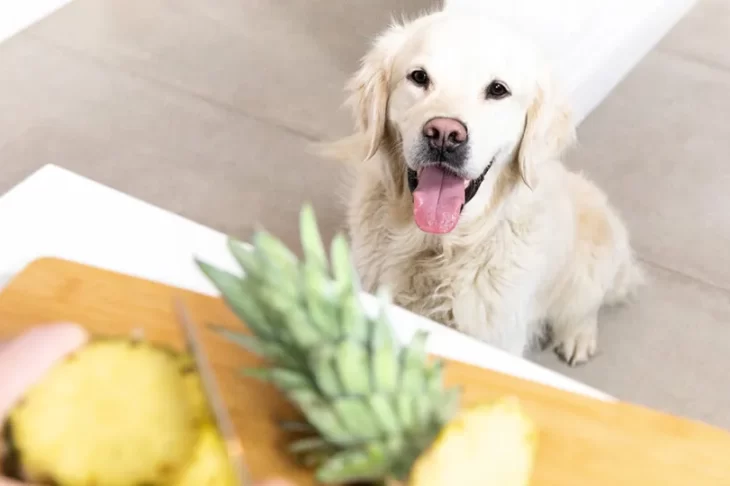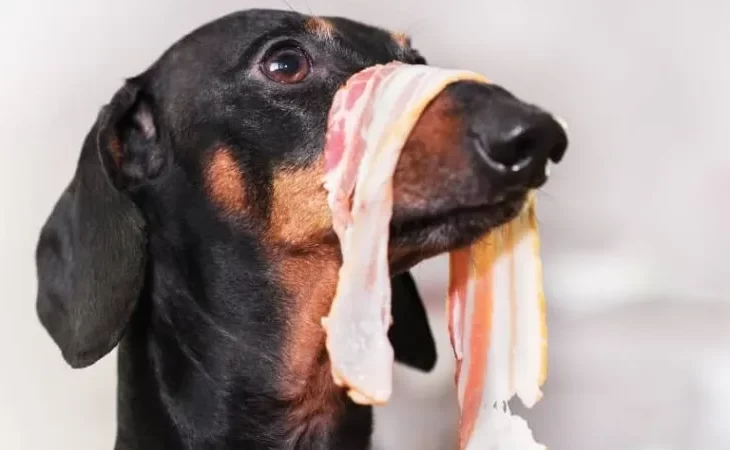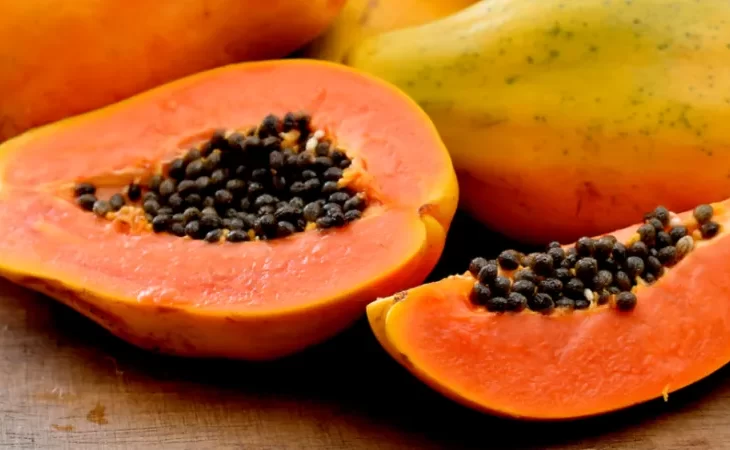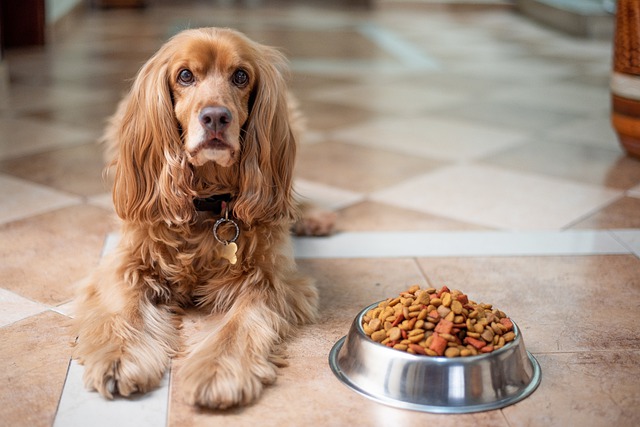
When To Switch Puppy To 2 Meals A Day? Puppy Feeding Tips
First, when should a puppy switch to two meals per day?
At 6 to 12 months of age, it is the best time to switch your puppy from three meals a day to three meals a day. Remember that most small-breed dogs and toys can transition to two meals per day between the ages of 7 and 9 months.
Even though it won’t seem like it, your puppy’s first year will go by quickly, and that little pup will quickly mature into an adult dog.
One of your dog’s biggest life milestones and one that has a significant impact on their general health is the change from three to two meals per day.
Your puppy will be on the right path to growing up happy and healthy if you know when to transition them to two meals per day.
Please continue reading for more information.
Table of Contents
When To Switch Puppy To 2 Meals A Day?
Between the ages of six and twelve months is the ideal time to reduce your puppy’s daily meal intake from three to two. It’s important to remember that most toy and small breed dogs can transition to two meals a day between the ages of seven and nine months.
In contrast, large and giant breeds can continue eating three meals a day until they are between 12 and 14 months old.
The amount of food your dog should eat each day and how often they should eat are two things that depend on a variety of factors.
For instance, puppies that have been spayed or neutered require fewer meals and less nutrient-dense food because they are less active than their intact counterparts.
For the most part, you can switch a neutered or spayed puppy to adult maintenance food to reduce their calorie intake and prevent obesity.
Puppy Feeding Schedule
Six To Twelve Weeks
Puppies must eat several times a day after being weaned from their mothers and sent to their new homes. At this age, they’re growing fast! Experts recommend feeding four meals spread evenly throughout the day, always at the same time.
You should be feeding a diet designed specifically to meet a developing puppy’s nutritional needs, i.e. puppy chow. Consult your veterinarian about the specific nutritional requirements for your puppy if you decide to make it yourself.
Puppies can typically switch to dry food that isn’t moistened by the time they’re 9 or 10 weeks old if they’re eating a commercial diet. You might have been using canned food as a supplement before that.
Three To Six Months
You can cut back from four feedings per day to three during this growth stage for your puppy. Feed your puppy breakfast, lunch, and dinner at the same time every day. You will continue to feed your puppy food, but you should keep an eye on its growth and change the amount as necessary.
Your schedule for feeding and walking your puppy might resemble this if your workday is typically from 9 to 5:
- 7:00 am: Morning meal, followed by an outdoor walk and playtime
- 8:30 am: Outdoor walk and playtime
- 12:00 noon: Midday meal, followed by an outdoor walk and playtime
- 2:00 pm: Outdoor walk and playtime
- 5:00 pm: Evening meal, followed by outdoor walk and playtime
- 7:00 pm: Final outdoor walk and playtime of the night
Your puppy will probably lose her puppy pudge by the time she is three or four months old. If you think your puppy is overweight or underweight, talk to your veterinarian and adjust the amount of food given.
Six To 12 Months
An adolescent is developing from your puppy! You can transition to eating two meals a day at this point. Feed puppy food until your dog has been neutered or spayed. After that, you can transition to an adult maintenance food, depending on her age. Some puppies (especially those adopted from shelters or rescue organizations) are fixed as young as 8 weeks old, and they should continue eating puppy food until they are 6 months old.
Why Should You Feed Puppy Twice A Day?
You can start giving your puppy two meals per day once they are six months old. Your puppy has been burning calories like crazy for the first six months of his life.
You probably don’t need me to tell you how active your puppy can be. However, if you’re still new to raising puppies, heed this warning!
Your child naturally exhausts all of his reserves as a result of all the growing, walking, and playing. Puppy food is given more frequently throughout the day because of this.
When they are six months old, most babies start to calm down and can be switched to eating two meals instead of three. However, after seeing my own puppy turn into a ball of fire well after the six-month mark, I’m still not persuaded.
In spite of this, your six-month-old puppy is now prepared to eat twice daily. You’ll see that he’s not developing as quickly as he did during his first six months. You must therefore reduce the amount of food you give him to prevent him from developing a pot belly pup.
Even if you are only giving your puppy two meals per day, always follow the instructions on the food package to make sure she is getting the proper amount for her age.
Talk to your veterinarian for advice if your instincts tell you that it’s not the right age or time to switch your puppy to two meals per day.
What Times Are Ideal For Feeding Your Puppy?
Having the two meals separately is a smart idea. The majority of dog owners choose to feed their puppy twice daily: in the morning and in the afternoon.
The first meal for your puppy should be given at 7 am, right when it wakes up, according to pet nutrition experts. After that, you can accompany them on a walk or engage in interactive play. At 5 pm, you should eat your final meal of the day.
You are giving your puppy plenty of time to digest her food before bedtime by feeding her at 5 o’clock. After her meal, you could also take her for a stroll or engage in a game of ball.
Less likelihood of a mess in the middle of the night is another benefit of feeding your puppy at 5 o’clock. Your puppy will have more than enough opportunities to go potty between 5 and 7 o’clock in the evening.
In general, feeding a puppy late at night is a bad idea.
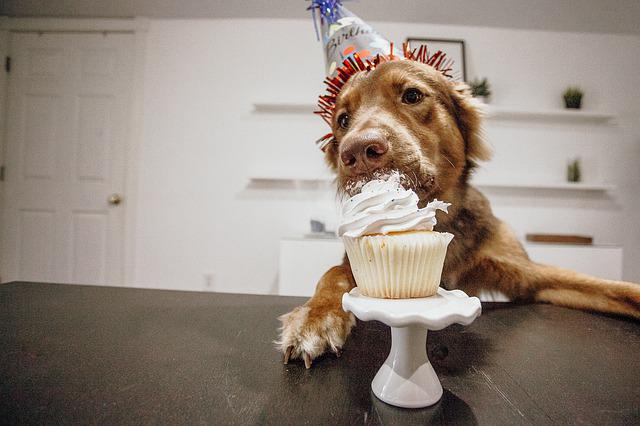
How Soon After Eating Can I Take My Puppy For A Walk?
It’s best to wait at least 2 hours after a meal before you take your puppy for a walk, although young puppies should be taken out to toilet immediately after eating as part of their toilet training.
Though running around after eating can be uncomfortable, the main reason is to try to prevent bloating of the stomach.
A bloated stomach can become twisted – a condition known as GDV (Gastric Dilatation and Volvulus).
Why You Shouldn’t Walk Your Puppy Right After Eating: GDV
GDV is a life-threatening condition that requires urgent veterinary attention and emergency surgery, as the twisted stomach cuts off its own blood supply causing shock.
Large breeds with deep chests such as Greyhounds and German Shepherds are at higher risk for developing health problems like GDV, however, it can happen in any breed.
Signs Your Dog May Have Bloat Or GDV Include:
- Attempting to vomit (usually multiple times but not bringing anything up)
- Drooling
- Swollen abdomen that is hard or tight to touch (not always obvious in deep-chested breeds as their stomach sits under the rib cage)
- Distress or agitation
- Panting
- signs of abdominal pain include turning to look at one’s stomach or showing signs of territorial behavior.
Other nutritional factors may increase the risk of GDV. These include:
- Feeding one large meal per day
- Eating rapidly
- Increased stress around mealtimes (such as competition from another dog)
- Feeding a dry food with oil or fat among the first four listed ingredients
- Feeding from a height using an elevated bowl
If your puppy is an at-risk breed, this is another important reason for feeding two meals a day instead of one large meal.
Adding canned wet food to a dry diet is also considered beneficial and make sure to wait at least one hour after exercise before feeding a meal.
Larger-sized kibbles or the use of a slow-dispense feeder can also be helpful to slow rapid eaters. See more about Can I Walk My Dog After Cutting The Quick
How Much Food Should A Puppy Eat Twice Daily?
Depending on their size and weight, you should feed your puppy a certain amount of food. How much food your puppy should consume is heavily influenced by its breed. More active dog breeds exist than others.
Furthermore, it depends on whether you give your puppy wet or dry food. You can determine whether you’re feeding your dog too much or not enough by using the following advice:
- Your puppy starts to appear a little plump. Make a habit of weighing your puppy. To do this is not too difficult. Weigh yourself first, then take your puppy into your arms and weigh the two of you together. Find out the average weight for your dog’s breed at various ages, and stick to it. If your dog appears overweight or weighs more than it should for its age and breed, reduce the amounts.
- Your dog’s ribs are visible: When you underfeed your puppy, this occurs. You can feel your ribs, but you don’t want them to protrude. Therefore, gradually increase the quantities until the ribs are barely visible.
- Read the feeding guidelines on the food package. The best way to make sure you give your dog the right amount each day is to do it this way. If the package specifies the total amount for the day, divide it into two half-meal portions.
Don’t let your puppy trick you into thinking she’s still hungry after a meal. If your puppy enjoys eating, she will use “puppy eyes” to bribe you into giving her more.
Overfeeding your puppy could result from this. Begging at the table is an additional risk factor. Your puppy may appear to be hungry, but all they’re really trying to do is join you for a tasty meal.
Switching From Puppy To Adult Food Twice A Day
When is the ideal time to transition your dog from puppy to adult food? To meet the growing needs of your puppy, puppy food is packed with extra calories and nutrients. But as they grow older, they require less of the expensive stuff.
Make sure you don’t introduce adult food to your puppy too soon. It’s also just as important you don’t keep them on puppy food for too long. Obesity and other health problems could result from this.
More quickly than larger dog breeds, smaller dog breeds mature. Therefore, you can start transitioning your young Dachshund to adult food when they are between 7 and 10 months old.
Before introducing adult food, large breed dogs should weigh at least 80 pounds. From 12 to 16 months is a possible range.
It is best to gradually transition from puppy food to adult food. In one to two weeks, gradually add adult food to your puppy’s diet to help them adjust and deal with the change less stressfully. The gradual approach might also aid you in addressing any problematic beggining behavior.
Again, make sure your puppy is receiving the proper amounts by adhering to the feeding instructions on the dog food package or can. If you’re still unsure of how much to feed your puppy once you switch to adult formula, you can also consult your veterinarian.
Are Two Meals A Day Necessary For Dogs?
Most puppies can start eating two meals a day between the ages of six and twelve months, and they should continue doing so for the rest of their lives.
Although most dogs do well on a two-meal-per-day schedule, adding a third meal can also be a good option.
Smaller meals may be easier for dogs with digestive problems to digest, and they may perform better when given breakfast, lunch, and dinner.
Regardless of what you decide, make sure there are no more than 12 hours between meals because your dog’s stomach can become too acidic, which can cause vomiting and nausea. See more about Best Dog Food For Great Dane With Diarrhea
Is It Cruel To Only Feed A Dog Once A Day?
Giving your dog one meal a day is not cruel as long as you are giving them the right amount of food for their age, size, and level of activity.
However, giving an adult dog just one meal per day for an extended period of time can result in serious health issues like bloat and hyperglycemia.
At least two smaller meals are much healthier for your dog to eat each day. In addition to promoting healthy digestion and regular bowel movements, eating breakfast and dinner will keep your dog energized throughout the day.
We switched our puppies to once-daily feedings when they were around 15 months old when I first started rearing guide dog puppies back in 2006.
The school apparently came to the same conclusion as I did that only feeding our dogs once a day was not a good idea. When I took care of my second puppy, they resumed feeding our older puppies twice daily.
The End
Your puppy’s overall health and development depend on you knowing when they should switch from three meals to two.
Your puppy will grow into a happy, healthy, and robust adult dog if you make sure they are receiving all the proper nutrients based on their life stage.
Here are some things to keep in mind regarding your puppy’s feeding schedule:
- From six to 12 weeks of age, feed four meals a day
- From three months to six months, feed three meals a day
- From six months to 12 months, switch your puppy to two meals a day
In the end, while most puppies can begin eating twice a day when they are between six and twelve months old, ask your breeder or rescue facility for their feeding recommendations.
To find out more about our betterdoggy, contact us right away.
Best wishes.

